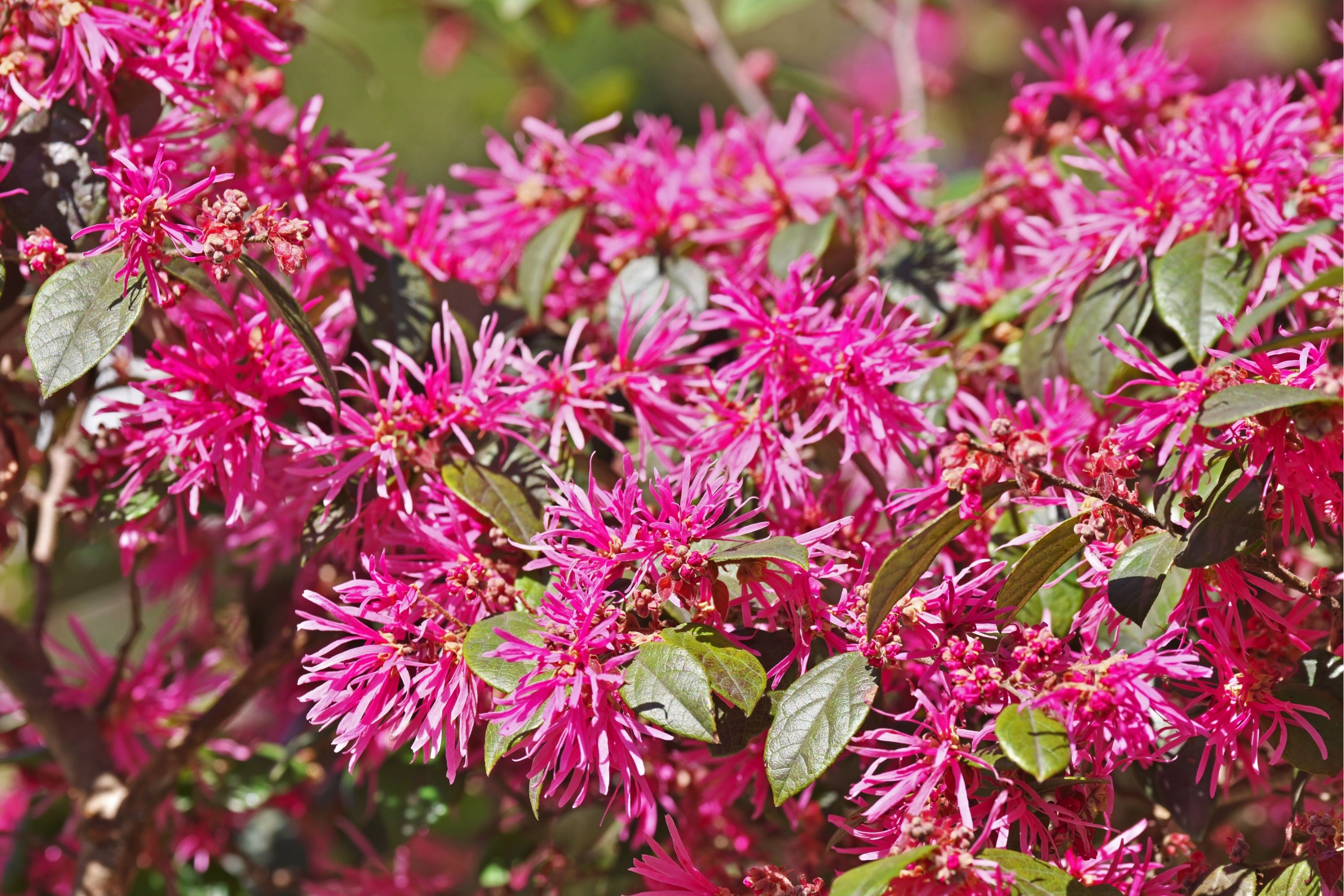Chinese fringe flower
(Loropetalum chinense)

Description
Loropetalum chinense, commonly known as Chinese fringe flower or loropetalum, is a member of the witch hazel family (Hamamelidaceae) and is native to China, Japan, and Southeast Asia. It is a popular ornamental plant that is prized for its attractive foliage and striking flowers. In this article, we will provide a detailed encyclopedia-style overview of Loropetalum chinense, covering its taxonomy, morphology, ecology, cultivation, and uses. Taxonomy: Loropetalum chinense was first described by the German botanist Philipp Franz von Siebold in 1830. The genus name Loropetalum is derived from the Greek words lóros, meaning "strap," and pétalon, meaning "petal," in reference to the strap-like petals of the flowers. The specific epithet chinense means "from China," which is the native range of the species. There are several varieties of Loropetalum chinense, including 'Burgundy', 'Plum Delight', 'Sizzling Pink', and 'Zhuzhou Fuchsia'. These varieties differ in their flower color, leaf color, and growth habit. Morphology: Loropetalum chinense is a multi-stemmed shrub that can grow up to 15 feet tall, but is typically smaller in cultivation. The leaves are alternate, ovate to lanceolate in shape, and are 1-4 inches long and 0.5-2 inches wide. The leaves are glossy and have a reddish to deep purple color in some cultivars, while in others they are green. The leaves are also evergreen in warmer climates. The flowers of Loropetalum chinense are its most striking feature. They are produced in clusters at the tips of the branches and are 0.5-1 inch in diameter. The flowers have four strap-like petals that are pink to red in color, depending on the cultivar. The flowers are fragrant and are produced in abundance in the spring. Ecology: Loropetalum chinense is adapted to a wide range of environmental conditions and can be found growing in forests, thickets, and rocky hillsides in its native range. It is tolerant of a wide range of soil types, but prefers well-drained soils. It can tolerate both sun and shade, but produces more flowers in full sun. In its native range, Loropetalum chinense is pollinated by insects, particularly bees. It is also an important food source for some wildlife species, including birds and small mammals. Cultivation: Loropetalum chinense is a popular ornamental plant that is grown in gardens and landscapes in many parts of the world. It is relatively easy to grow and can be propagated by seed, cuttings, or layering. When planting Loropetalum chinense, choose a site with well-drained soil and good sunlight exposure. Dig a hole that is two to three times wider than the root ball and plant the shrub at the same depth it was growing in its container. Water the plant well and apply a layer of mulch around the base of the plant to help retain moisture. Loropetalum chinense requires regular watering, particularly during dry periods. It also benefits from regular fertilization, particularly in sandy soils. Prune the plant in late winter or early spring to maintain its shape and encourage bushy growth. Uses: Loropetalum chinense is primarily grown as an ornamental plant in gardens and landscapes. Its attractive foliage and striking flowers make it a popular choice for hedging, border planting, and mass plantings. It is also suitable for growing in containers.
Taxonomic tree:







